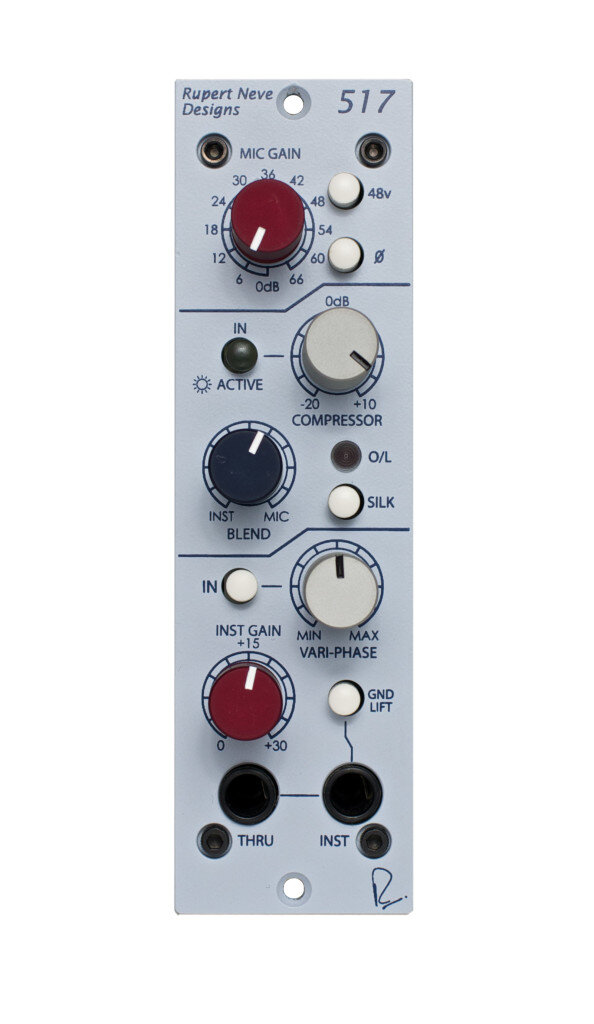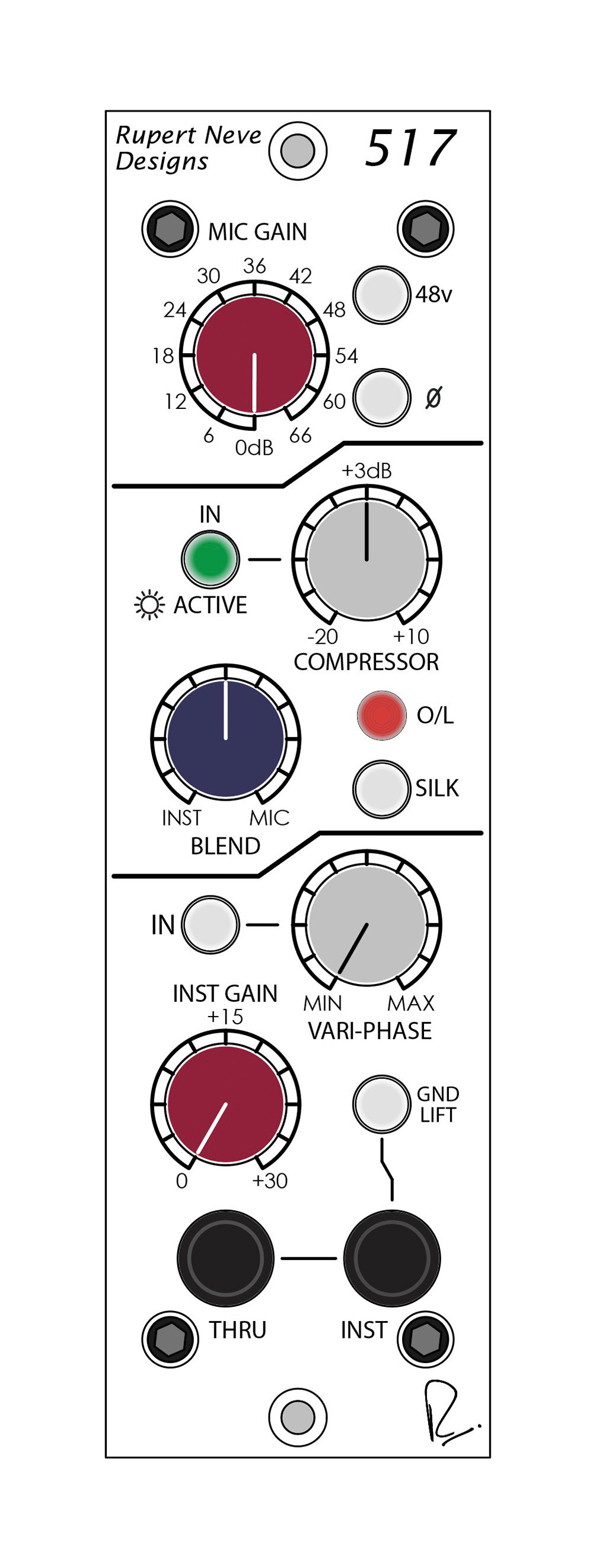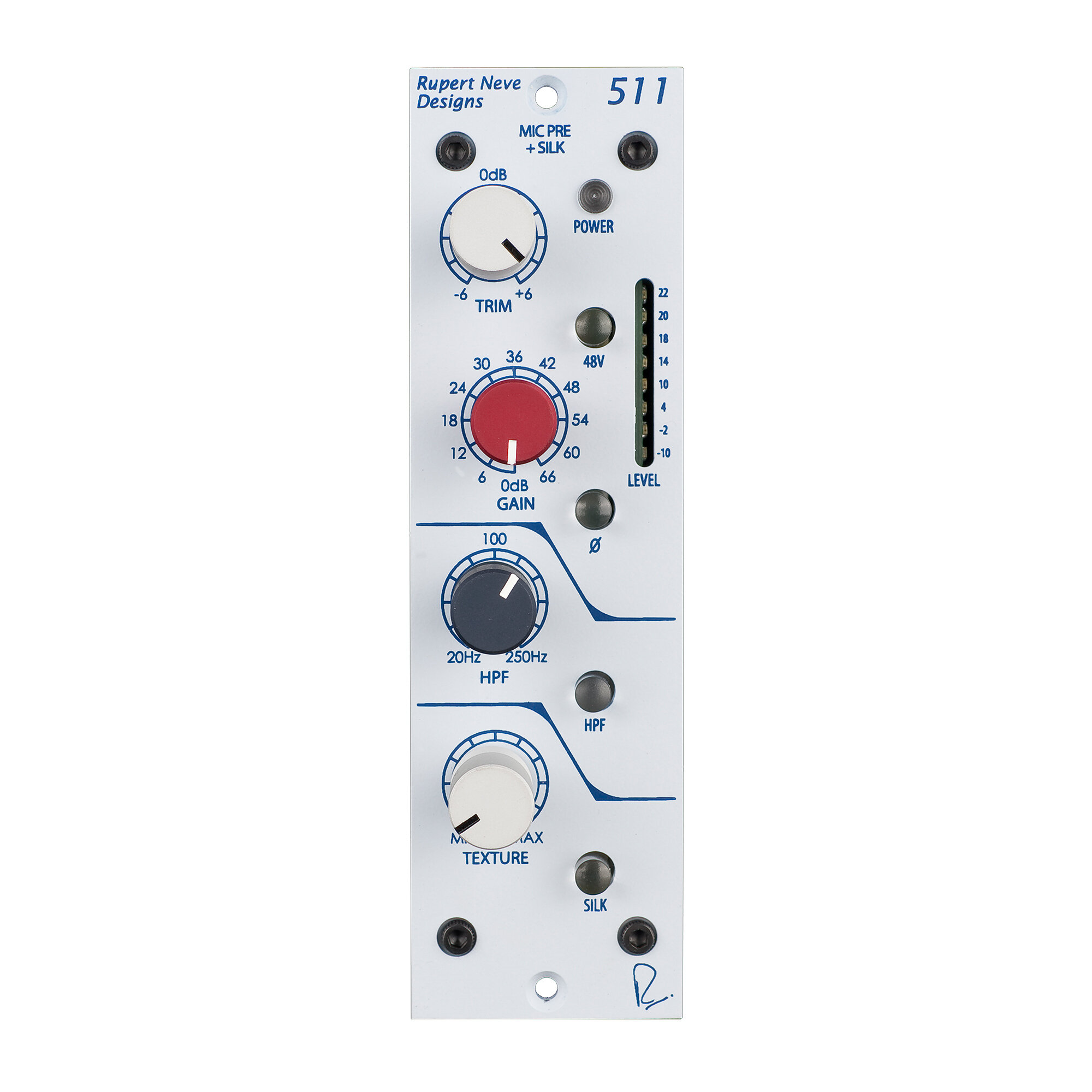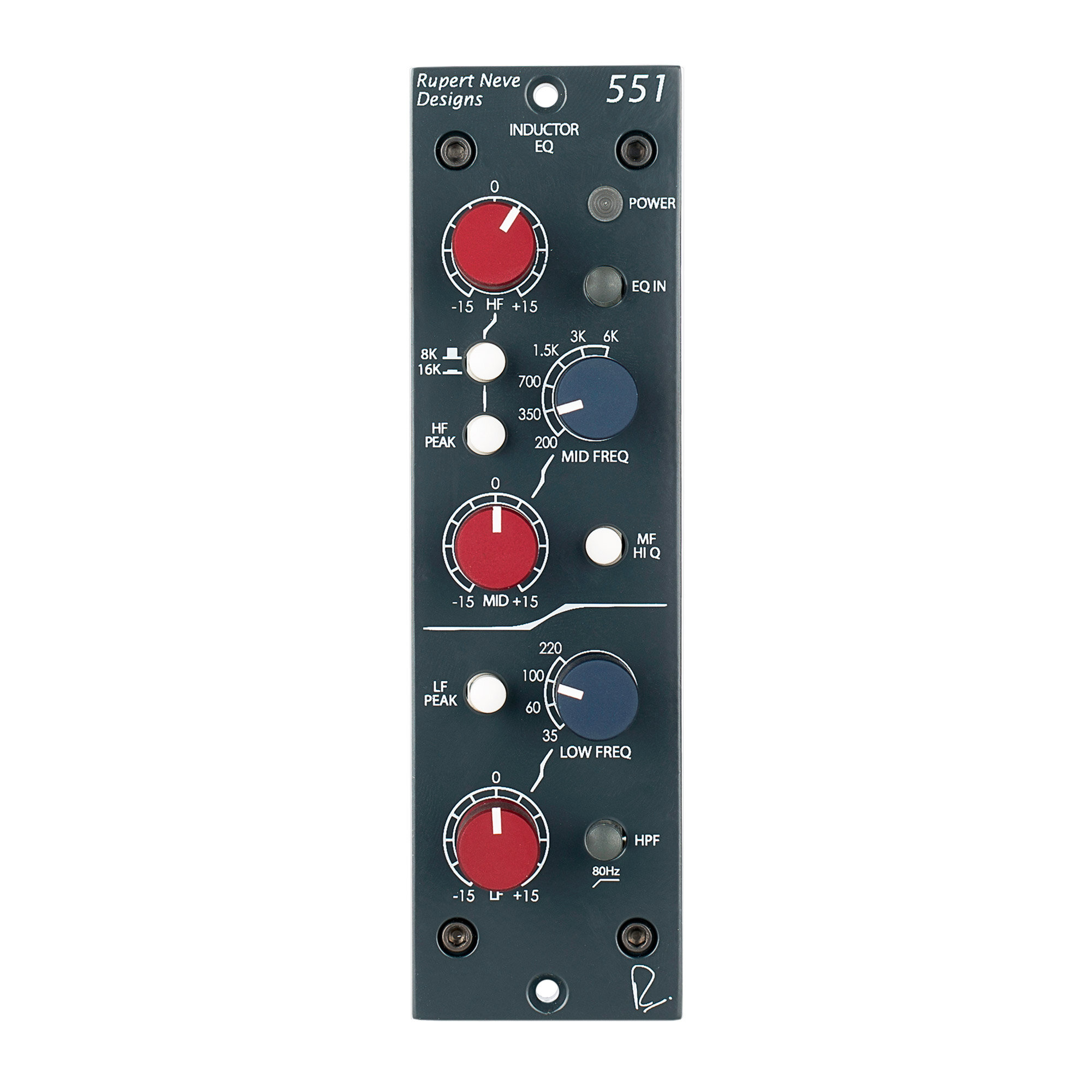
517
500 Series Mic Pre / DI / Comp
OVERVIEW / MEDIA / FEATURES / REVIEWS / SPECS & RESOURCESClassic tone & control for your mic AND instrument.
The 517 includes a world-class mic preamp, one-knob compressor, an Instrument input with dedicated gain control and Vari-phase, Silk saturation and blend controls for INST/MIC – all in a single 500 series module.

“...it would be hard to find a more efficient tool...”
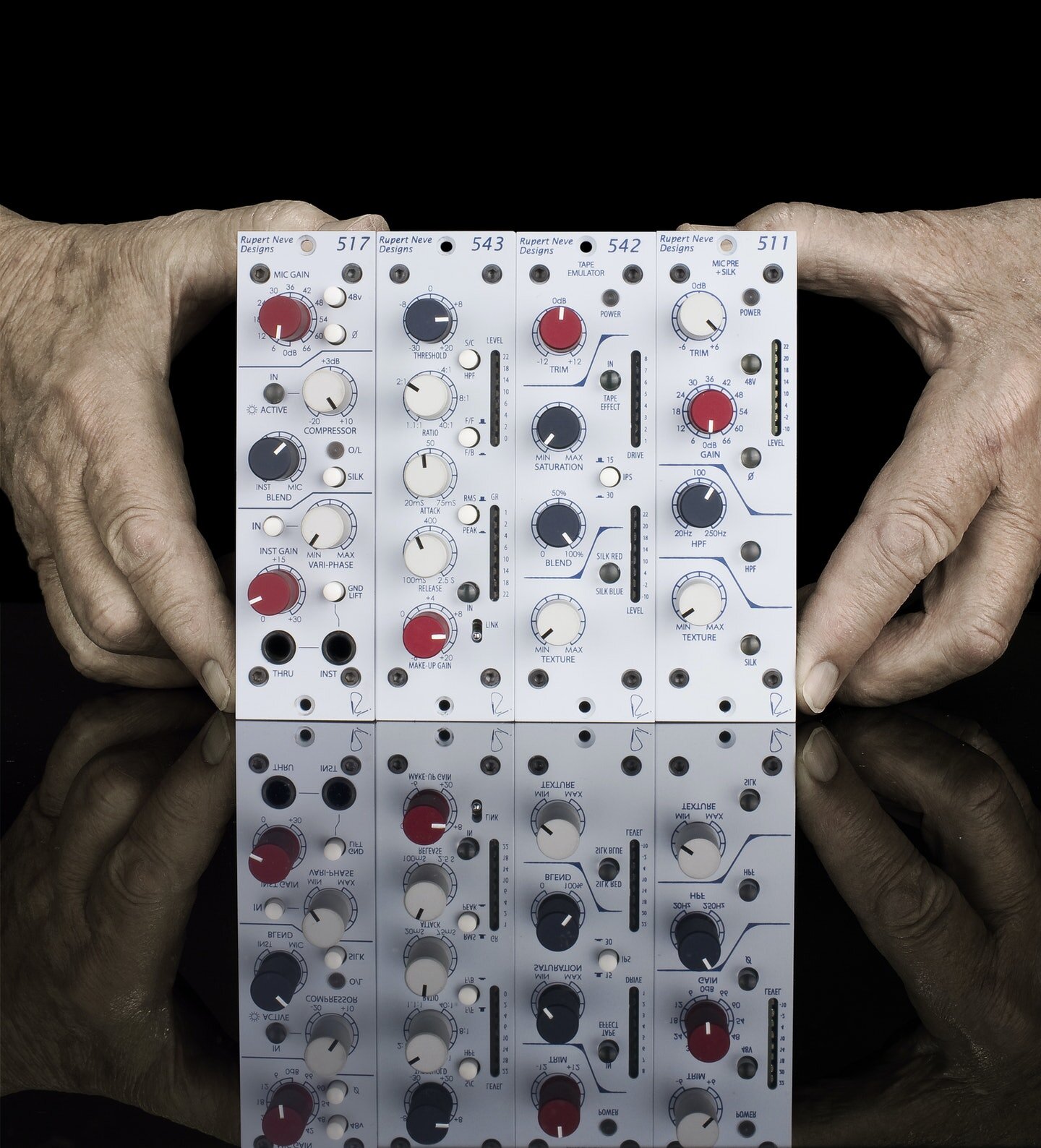
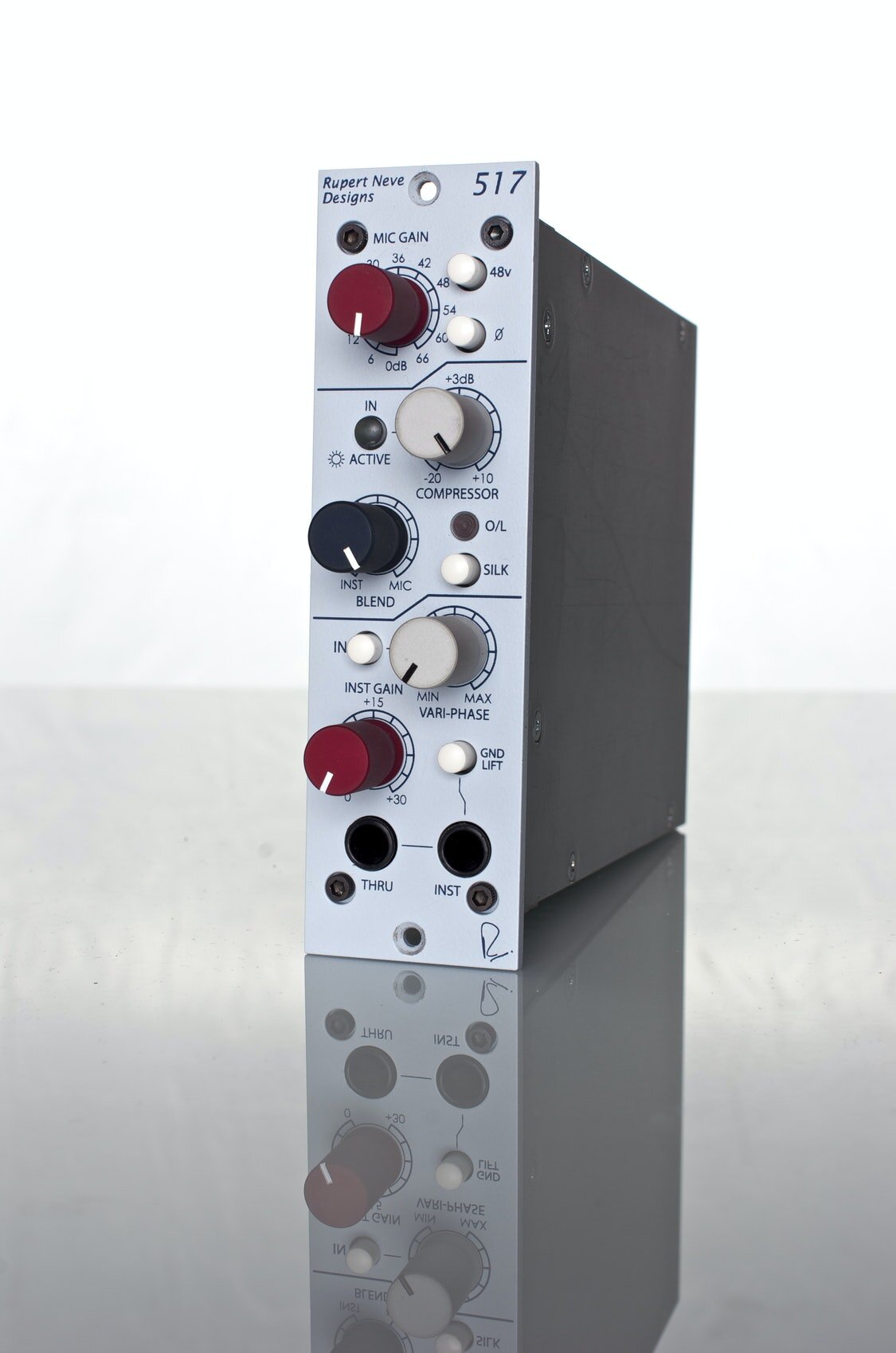
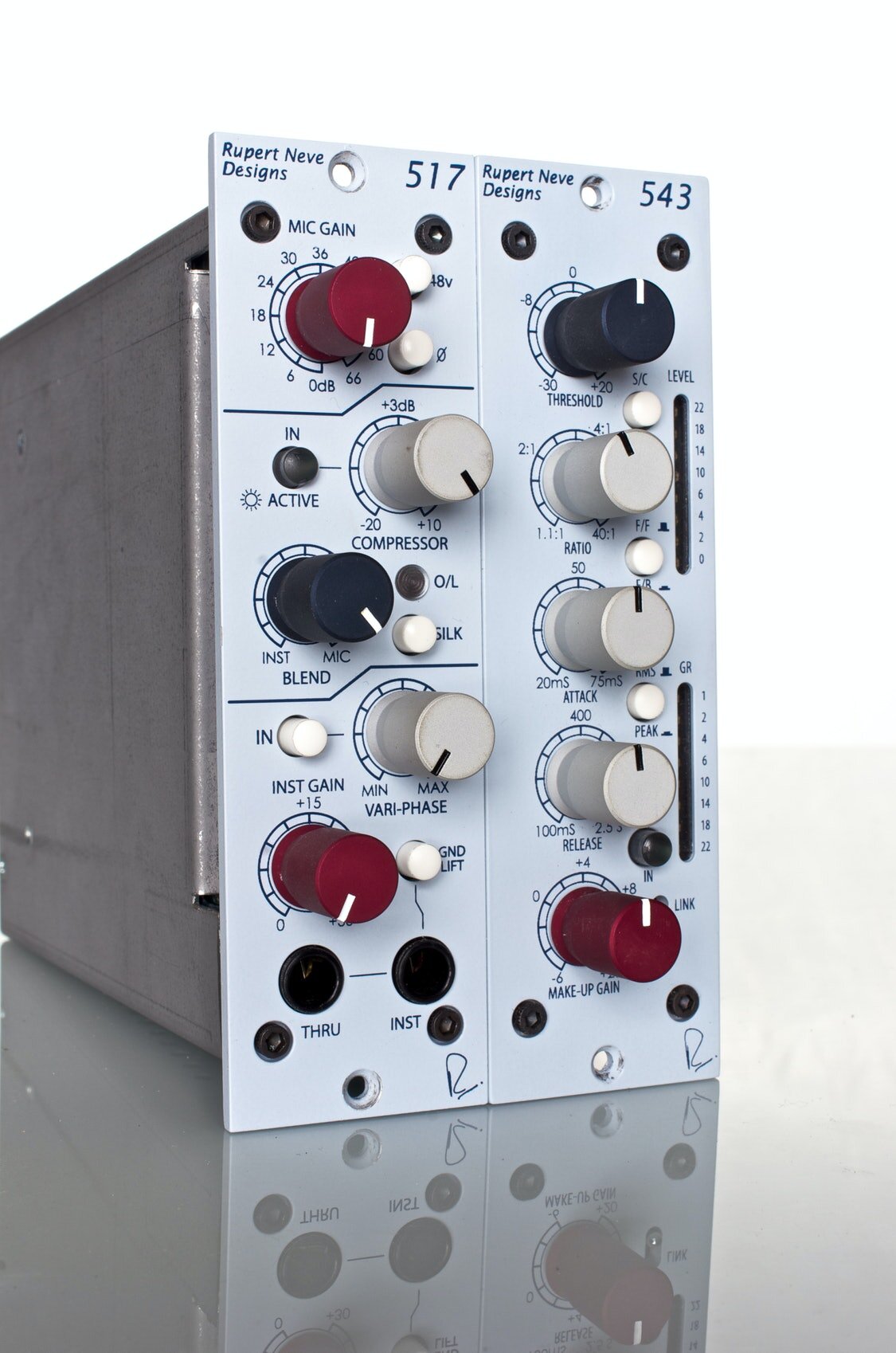
GAIN
A 12-way precision rotary switch covering from Line (0) and Mic from 0 to 66 dB in 6 dB steps.
+48V
Engages phantom power on the microphone input, as supplied by the 500 series rack.
POLARITY
Push button inverts the polarity of the signal path. The symbol “Ø” is often used to denote opposite polarity.
COMPRESSOR
Based around a new LDR (light dependent resister) design, the 517’s opto-coupler compressor has been simplified to a single threshold control with auto make up gain. By default, the compressor is set to a fixed 2:1 ratio with fixed attack and release. To set the compressor, simply dial the threshold control down until the desired amount of compression is achieved. An LED light indicates when the compressor is active.
BLEND
The 517 can be used to combine and compress the Mic input and the Instrument input. For example, the Instrument input could be used for an acoustic guitar’s pickup output while the Mic input is being used for either a guitar amp speaker or a vocal. The blend knob can then control the tonal balance between the two sources.
SILK
Illuminated push-button that engages the Silk circuit, which enhances the source’s harmonic content by utilizing the custom Rupert Neve Designs output transformer.
VARI-PHASE
The VARI-PHASE control rotates the phase incrementally, allowing two signals with the same source to be phase aligned. This control is most apparent when the signals being combined are at roughly equal levels, and is generally used when blending an instrument’s direct signal with its amplified signal, as captured by a microphone.
INSTRUMENT GAIN
Front panel TRS Input and passive through for hi-z sources. Continuous gain control from 0dB to 30dB.
THRU & INST 1/4” JACKS
These 2 jacks can be used for a direct instrument input and a passive THRU output. This instrument has a dedicated gain control and can be blended with Mic Input signal.
REVIEWS
“If that flavor is something you're interested in, it would be hard to find a more efficient tool than the 517 channel strip. I would consider it to be an impressive and powerful addition to any 500-series rack, especially if you lack the time, space, or budget to patch together individual components.”
“Easily worthy of finding themselves in the best studios in the world.”
“The 517 is my first investment into analog gear. Tracking with this top shelf pre is a game changer and there's a NOTICEABLE difference when mixing. The compression is beautiful. The Mic/DI blending feature is killer when I'm tracking acoustics. Can't say enough about this unit, I got a second one on the way!! It's worth every red cent.”
“This is a very versatile unit that could be used on pretty much anything. The preamp sounds great of course, and with the silk feature can add a little extra color… All in all, another great piece from RND that offers one heck of a bang for the buck.”
“With the addition of the Variphase and compressor, this is a tough one to beat. Get 2 and you will not be disappointed.”
“…This is the unit you want use, whether you use anything else or not. It just sounds AMAZING just as a DI. So good.”

SPECIFICATIONS & DOWNLOADS
FREQUENCY RESPONSE
Mic Pre, Main Output, no load.
-0.1 dB @ 10 Hz
-1 dB @ 120 kHz
DI Input, Main Output, no load.
-0.1 dB @ 10 Hz
-1 dB @ 120 kHz
NOISE
Measured at Main Output, unweighted, 22Hz - 22kHz, Terminated 150 Ohm.
With gain at unity: better than -100 dBu
With gain at 66 dB: better than -60.5 dBu
Equivalent Input Noise: better than -125 dBu
DI
With Gain @ Unity: Typically better than -100 dBu
With Gain @ +30 dB: Typically better than -75 dBu
HIGH PASS FILTER
Frequency: 80 Hz
Slope: 12 dB/Octave Bessel
Microphone Input Impedance
10,000 Ohm
Instrument Input Impedance
1.6 Meg Ohm (3.3 Meg Ohm balanced)
Maximum Output Level
Maximum output from 20 Hz to 40 kHz is +23 dBu.
GAIN
Mic Pre: Unity to +66 dB in 6 dB steps
DI: Unity to +30 dB continuous
Total Harmonic Distortion and Noise:
@ 1 kHz, +20 dBu output: Main Output: Better than 0.001%
@ 20 Hz, +20 dBu output: Main Output: Better than 0.002%
Silk Engaged: Better than 0.2% Second harmonic
VARI-PHASE
@ 100 Hz: 2.9 degrees to 57.4 degrees
@ 1 kHz: 33.5 degrees to 156 degrees
@ 10 kHz: 149 degrees to -175 degrees
PHANTOM POWER
+48 Volts DC +/- 1% (provided by 500 Series Rack)
POWER REQUIREMENTS
Supplied by 500 series rack with 110-125 mA @ +/- 16V
COMPRESSOR
THRESHOLD
Continuously Variable from -20 dBu to +10 dBu
RATIO
Fixed at 2:1
ATTACK & RELEASE
Fast Mode: Attack 5ms, Release 50ms
Slow Mode: Attack 250ms, Release 500ms
TOTAL HARMONIC DISTORTION
Measured @ Main Output.
MIC PREAMP AND DI
@ 1 kHz, +20 dBu output: Better than 0.002%
@ 20 Hz-20 kHz, +4 dBu output: Better than 0.02%
SILK
@ 20 Hz, +4 dBu output: Better than 0.5%
@ 50 Hz, +4 dBu output: Better than 0.1%
FREQUENTLY ASKED QUESTIONS
Yes, all of our modules are designed within the 500 Series specification and we are not aware of any instances where they have not worked as intended.
While the amplifiers are similar, the 517 has a transformerless input stage and the line amplifiers for all the 500 series products run on lower voltages with slightly lower headroom, due to the inherent limitations of the 500 Series format. The performance of the 517 is still excellent however.
No, the RNDI is a unique design.
The compressor LED does not turn on merely by engaging the compressor switch: it turns on when the circuit is actively compressing, and the compressor is active when the signal rises above the set threshold. So, lower threshold = more compression = LED on.
If you aren't getting compression with the threshold all the way down, make sure you have added enough gain to your signal, and also that the Blend control is set fully to the signal (or mix of signals) you are looking to compress.
We utilize an electrogalvanized chassis to shield the internal circuitry from interference. With this process, it isn’t possible to “finish” the chassis metal (i.e. polishing or anodizing) so the machining marks from forming the metal will be visible. In normal operation inside a 500 series rack, this metal will never be visible.
We use standard 4-40 ¼" screws to secure our 500 series rack modules. Each of our modules and our R6 and R10 racks include these screws. Please contact our service department if you have questions or need additional screws.


